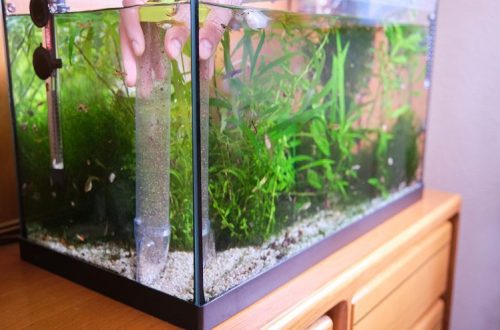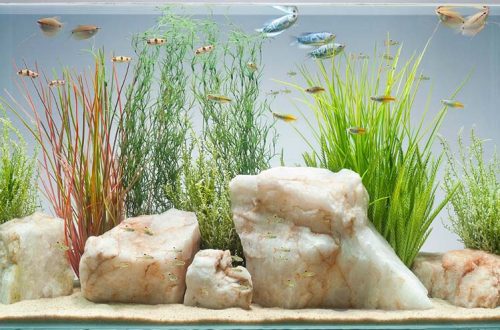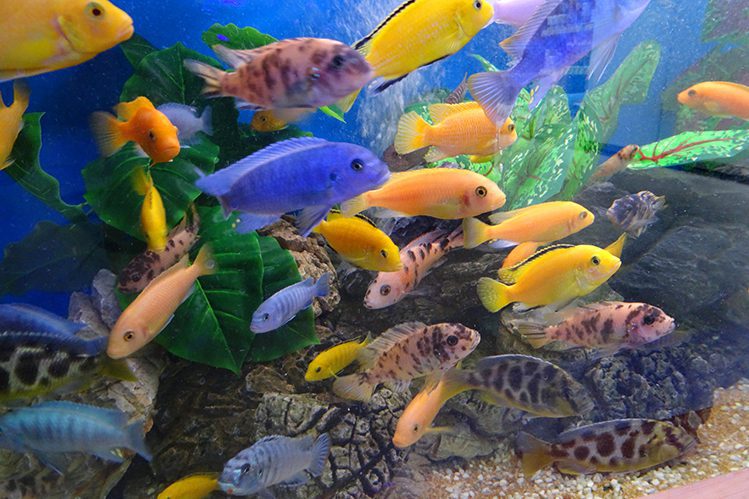
Keeping cichlids in an aquarium
Cichlids are a large family of bright, active freshwater fish. They are called the smartest fish in the world – they are able to get food and protect offspring in small forest streams and in giant lakes with large predators. Cichlids are known for their energetic behavior, zealous attitude to the territory. An aquarist with such pets will not get bored.
Cichlids live in Africa and South America. Several species are found in Asia. We will talk in detail about African cichlids. Moreover, experts advise novice fans of these amazing creatures to get African cichlids first. The cichlids of African lakes Malawi, Tanganyika and Victoria have attracted the attention of researchers for several decades. Cichlids of Central and West Africa live in the large rivers Nile, Niger and Congo.
The lion’s share of the inhabitants of home aquariums is the cichlids of Lake Malawi. This is a huge fresh water reservoir. Malawi cichlids are divided into two groups – Mbuna and Utaka. Mbuna live in the coastal zone, near the rocks. They feed on algae, but small crustaceans and plankton make up part of their diet. The Mbuna group includes labidochromis, pseudotrepheus and other species. The Utaka cichlid group lives in the open waters of Malawi and prefers to feed on small fish. This group includes dimidochromis, alunocara and others.

Among the cichlids of Lake Tanganyika there are XNUMX% predators and those that prefer plant foods. The cichlid populations of Lake Victoria are endangered. But each sheltered cichlids of Lake Victoria – neochromis, haplochromis – makes an important contribution to their conservation.
African cichlids are rapidly evolving and acquiring almost highly intelligent abilities. Cichlids of African lakes and rivers survive in extreme conditions. Constant competition has developed their aggressive behavior. For the sake of a successful hunt, they can wait in ambush for a long time. They can pretend to be dead or dig through the bottom in an attempt to portray a herbivorous inhabitant of the water depths.
These are territorial fish that jealously guard their own corner of the underwater kingdom, especially during the spawning season. The need to raise offspring surrounded by predators forced them to go to new tricks. The male builds a mound for spawning, the female lays eggs, the male fertilizes it. The female immediately hides the fertilized eggs in her mouth. She is able to eat nothing for a month in order to carry eggs and protect fry at the beginning of life. The mother cichlid swims with its mouth open so that the fry can breathe. These resourceful fish have gone through a lot to survive in the wild. The genetic memory makes the African cichlids in the aquarium keep up the pace.
It is believed that African cichlids are not easy to care for. But the owners of these exotic fish are sure that the problem is in the spontaneity with which novice aquarists acquire cichlids. They are bright and unusual, attract attention, so their purchase is often not preceded by a study of their character traits and necessary living conditions. The content of African cichlids is not so troublesome, but requires knowledge.
Cichlids are predators. If you decide to feed them with small fish, first soak the purchased fish in a separate container. You need to make sure that the future food for your African cichlids is safe, that the fish are healthy. But this approach will allow your pets to feel like real hunters. Live food for African cichlids can become a carrier of infection and parasites. The same bloodworm can be given to cichlids, but only after a hard frost. So you eliminate the possibility of infection, but retain the nutritional properties of the feed.
Do not forget that special feeds have already been developed for different types of fish, taking into account their needs. African cichlids of the Mbuna group need food containing algae – spirulina, nori. If they do not have enough food of this kind, they will eat aquarium plants. You can give pets cucumbers, zucchini. You can feed cichlids in the morning and in the evening. Remaining food should be removed from the aquarium immediately.
African cichlids need oxygen. A good aeration system with uninterruptible power supply should be installed. Otherwise, the fish may suffocate if the electricity is turned off in the house for any reason. It is important to install a powerful external filter. Every week you need to change up to 30% of the aquarium water to fresh. The optimum temperature in the aquarium is 26-28 degrees Celsius.
African cichlids are accustomed to hard water, so you won’t have much trouble maintaining the right level of acidity and hardness. Let’s take as an example blue dolphins – African cichlids of the Mbuna group. In an aquarium, they grow up to 20 centimeters in length; with a caring owner, they can live for 15 years. The color of the scales of blue dolphins is similar to blue fabric with a metallic sheen. They feel great with acidity from 7,2 to 8,5 and hardness from 5 to 20.
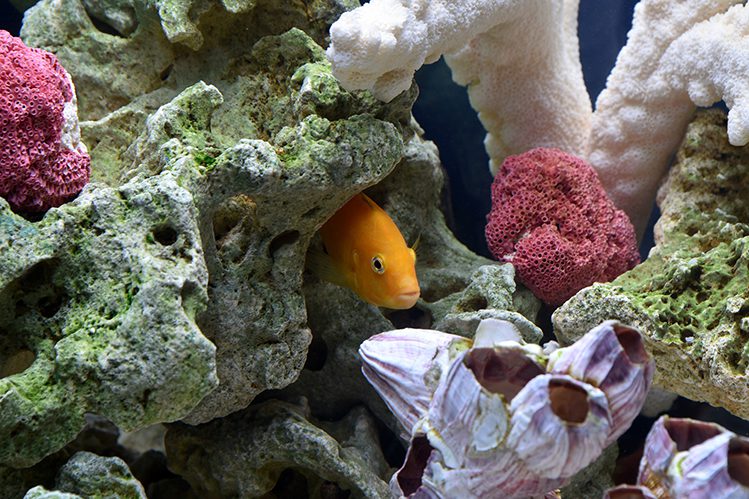
As for the plants in the cichlid, it is better to do without them. Or decorate the aquarium with a hard-leaved large plant like a giant cryptocoryne or anubias. The cichlids of Lakes Tanganyika and Victoria do not usually bite aquarium plants, but tear their roots. Representatives of the underwater flora with a powerful root system will do, the roots should be covered with stones.
When choosing soil, it is also important to take into account the habits of African lake cichlids. Malawian cichlids of the Utaka group burrow into the sand when they sense danger. Cichlids dig up the soil in the hope of finding something to eat. This habit allows the aquarium owner to only occasionally siphon the soil, as the cichlids do the cleaning themselves. African cichlids need soil to build a mound for spawning.
The bottom of the aquarium can be laid out with sand or other fine soil – from 0,5 to one millimeter. You can use marble chips and not worry that such a soil will increase the hardness of the water. This is the kind of water cichlids love. Shells for beauty can also be added. There are species of cichlids that hide their eggs in empty shells.
In terms of scenery, you can get by with stones alone. With the help of light porous stones and a blue light lamp, you can create the illusion of a marine aquarium. African cichlids, although freshwater fish, are in no way inferior to marine life in terms of originality of color. For decoration, you can use Kenyan stone, Dragon stone, Carpathian stone, yellow cavernous sandstone, basalt. The abundance of caves and shelters will partly help to avoid conflicts between cichlids over territory. The main thing is to fix the stones so that the structure does not collapse during the construction of the next mound for spawning.
African cichlids are loving. If you want to get purebred offspring, it is better to make a species aquarium. Otherwise, the fish can easily start fry paired with a cichlid of another species. The result of such love will be a cross between two types of cichlids. Such young fish are no less viable, just the aquarist needs to know that such a scenario is possible.
When buying African cichlid fry, you have the right to ask the breeder for a video or at least a photo of the baby’s parents. How to choose a healthy fry? If young African cichlids in an aquarium lie at the bottom or bury themselves against a wall, then their health is not going smoothly. These exotic fish are active and energetic from childhood.
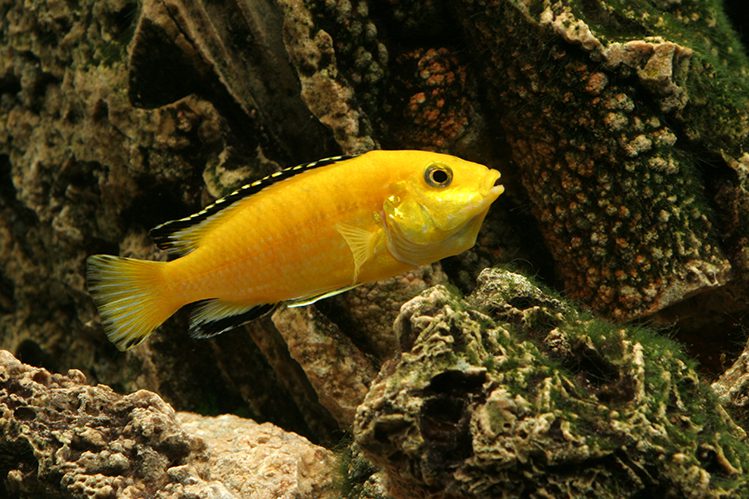
In materials about African cichlids, one can find references to their tough temper and quarrelsomeness. You should not jump to conclusions. The volume of the aquarium is important for African cichlids. It should be a capacity of 200 liters. A suitable aquarium length is 1,2 meters or more. The width of the aquarium from 50 centimeters is suitable. It is important to install a lid on the aquarium. The fact is that during a showdown, active African cichlids can accidentally throw a relative out of the aquarium. The longer and more voluminous the aquarium, the less territorial disputes the fish will have. African cichlids are harem fish. There should be three or four females per male.
If you decide to put several types of cichlids in one aquarium, please note that they must have a similar biotope, necessary living conditions, and diet. The basic rules for the neighborhood of fish always apply. No need to settle together herbivores and predators, active and slow, large fish with small ones. Try to fill the aquarium with species that spend most of their time in different layers of water. Fish may not converge in character due to individual characteristics. Partially compatible fish get along well if they are settled in the aquarium as fry.
African cichlids are able to find a common language with barbs and bots. Barbs and bots are known for their active nature and the desire to live in a flock of six or more fish. Please note that barbs and bots are prone to aggression alone. African cichlids usually get along with chain catfish – the same ancistrus. We wish that mutual understanding always reigned between you and your African cichlids.




